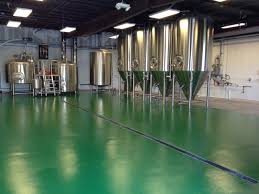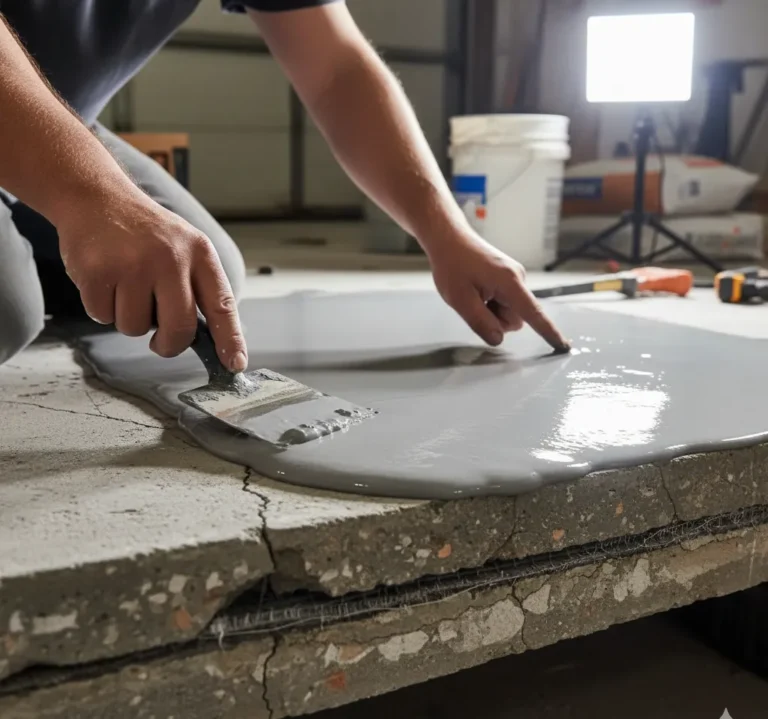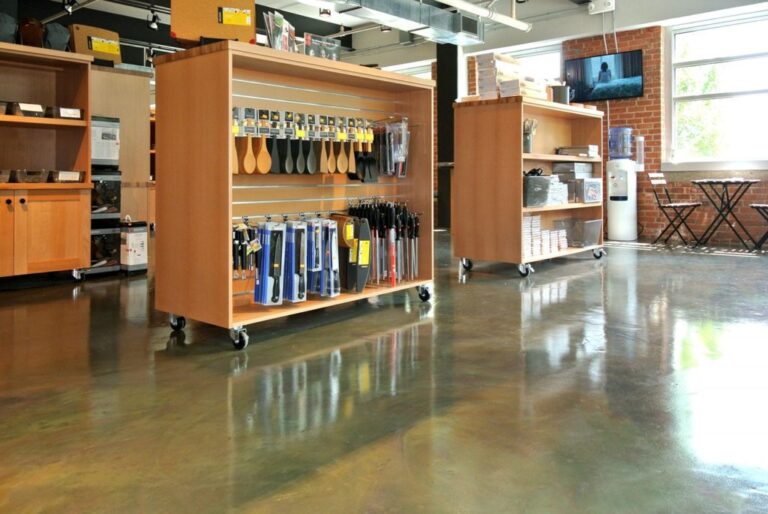Transform Your Garage with Microtopping: A Comprehensive Guide
I. Introduction to Microtopping for Garage Floors
Understanding the Basics of Microtopping
Microtopping is a thin, cement-based overlay that can be applied to existing concrete surfaces. It is designed to rejuvenate and enhance the appearance of floors, providing a fresh, modern look. This versatile material can be used in various settings, including garages, to create a durable and aesthetically pleasing surface.
- Thin Overlay : Microtopping is typically applied in layers that are only a few millimeters thick.
- Versatile Application : Suitable for both residential and commercial spaces.
- Modern Aesthetic : Offers a sleek, contemporary finish.
Benefits of Choosing Microtopping for Your Garage
Opting for microtopping in your garage comes with numerous advantages. It not only improves the visual appeal but also enhances the functionality of the space.
- Durability : Resistant to wear and tear, making it ideal for high-traffic areas.
- Easy Maintenance : Simple to clean and maintain, reducing long-term upkeep costs.
- Customizable : Available in various colors and textures to match your design preferences.
II. Microtopping for Garage: The Ideal Solution for Durability and Aesthetics
How Microtopping Enhances Garage Durability
Microtopping is known for its robust nature, making it a perfect choice for garage floors that endure heavy use. Its composition allows it to withstand significant pressure and resist damage from vehicles and tools.
- High Compressive Strength : Can handle the weight of cars and heavy equipment.
- Abrasion Resistance : Minimizes surface wear from frequent use.
- Chemical Resistance : Withstands spills from automotive fluids and other chemicals.
Aesthetic Possibilities with Garage Microtopping
One of the standout features of microtopping is its ability to transform the look of your garage. It offers a range of design options that can elevate the space from a simple storage area to a stylish extension of your home.
- Variety of Finishes : From smooth to textured surfaces.
- Color Options : Customizable to match your desired color scheme.
- Pattern Incorporation : Ability to create unique designs and patterns.
III. Preparing Your Garage for Microtopping Application
Essential Steps for Surface Preparation
Proper preparation is crucial for a successful microtopping application. Ensuring the surface is clean and free of debris will help the microtopping adhere better and last longer.
- Cleaning : Remove all dirt, oil, and grease from the surface.
- Repairing : Fix any cracks or holes in the existing concrete.
- Priming : Apply a primer to enhance adhesion.
Tips for Achieving the Best Results
To achieve the best results with microtopping, attention to detail during the preparation and application process is essential. Here are some tips to ensure a flawless finish.
- Consistent Mixing : Ensure the microtopping mixture is well-blended.
- Controlled Environment : Apply in a temperature-controlled environment to prevent premature drying.
- Layering : Apply in thin, even layers for a smooth finish.
IV. The Application Process of Microtopping in Garages 
Professional Techniques for Microtopping Installation
Hiring a professional for microtopping installation can ensure a high-quality finish. Professionals have the expertise and tools necessary to apply the material evenly and efficiently.
- Surface Assessment : Professionals will assess the condition of the existing concrete.
- Precision Application : Use of specialized tools for even application.
- Curing Process : Proper curing techniques to ensure durability.
DIY Microtopping Application: Is It Right for You?
While DIY microtopping application is possible, it requires a certain level of skill and knowledge. Consider the following before deciding to tackle the project yourself.
- Skill Level : Assess your comfort and experience with similar projects.
- Time Commitment : Be prepared for a time-intensive process.
- Tools and Materials : Ensure you have the necessary tools and materials.
V. Design Options with Microtopping for Garage Floors
Customizing Colors and Textures
Microtopping offers a wide range of customization options, allowing you to create a unique look for your garage floor. You can choose from various colors and textures to match your style.
- Color Choices : Available in a spectrum of colors.
- Texture Variations : Options for smooth, rough, or patterned textures.
- Finish Types : Matte, satin, or glossy finishes.
Incorporating Patterns and Designs
Adding patterns and designs to your microtopped garage floor can enhance its visual appeal. This customization can make your garage stand out and reflect your personal taste.
- Stenciling : Use stencils to create intricate designs.
- Stamping : Create patterns that mimic natural stone or tile.
- Freehand Designs : For a truly unique look, consider freehand designs.
VI. Maintenance and Care for Your Microtopped Garage Floor
Routine Cleaning Tips
Maintaining a microtopped garage floor is relatively simple. Regular cleaning will keep it looking its best and extend its lifespan.
- Sweeping : Regularly sweep to remove dirt and debris.
- Mopping : Use a damp mop with a mild cleaner for deeper cleaning.
- Spot Cleaning : Address spills immediately to prevent staining.
Long-Term Maintenance Strategies
In addition to routine cleaning, there are long-term maintenance strategies that can help preserve the appearance and durability of your microtopped garage floor.
- Sealing : Apply a sealant every few years to protect the surface.
- Avoid Harsh Chemicals : Use gentle cleaning products to avoid damaging the finish.
- Repairing Damage : Promptly address any cracks or chips to prevent further damage.
VII. Comparing Microtopping to Other Garage Flooring Solutions
Microtopping vs. Epoxy Coatings
When choosing a flooring solution for your garage, it’s essential to compare microtopping with other options like epoxy coatings. Each has its own set of benefits and drawbacks.
| Feature | Microtopping | Epoxy Coatings |
| Durability | High | Very High |
| Aesthetic Options | Wide Range | Limited |
| Maintenance | Easy | Moderate |
| Cost | Moderate | High |
| Installation | Professional or DIY | Professional Recommended |
The Advantages of Microtopping Over Traditional Concrete
Microtopping offers several advantages over traditional concrete, making it a superior choice for garage floors.
- Enhanced Aesthetics : More visually appealing than plain concrete.
- Improved Durability : Better resistance to wear and tear.
- Customization : Greater flexibility in design and color options.
VIII. Cost Analysis of Microtopping for Garage Projects 
Understanding the Investment
Investing in microtopping for your garage floor can be cost-effective in the long run. While the initial cost may be higher than some alternatives, the benefits often outweigh the expense.
- Initial Costs : Includes materials and labor.
- Long-Term Value : Increased property value and reduced maintenance costs.
- Customization Costs : Additional costs for unique designs and finishes.
Long-Term Savings with Microtopping
Microtopping can lead to significant long-term savings due to its durability and low maintenance requirements. Here’s how it can save you money over time. Microtopping basement renovation is a way to make old basement floors look new and smooth It uses a thin layer of special concrete to cover up cracks and give a fresh modern look Concrete countertop microtopping is a thin layer of special concrete that goes on top of existing counters to make them look new and smooth It’s like giving your old countertop a fresh coat of paint but with concrete instead
Microtopping textures evolve Microtopping texture creates thin decorative concrete surfaces This special coating makes plain concrete look pretty by adding a very thin layer on top that can have different designs and colors Microtopping financial evaluation helps businesses check if their small concrete coating projects are worth the money It looks at costs and benefits to see if Microtopping is a good investment
Sleek microtopping workspaces offer a smooth and modern surface for desks and tables These stylish workspaces are easy to clean and give rooms a fresh updated look Innovative desk coatings are special layers put on desks to make them stronger and easier to clean
Noise reduction microtopping is a special coating that helps make rooms quieter It can be applied to floors and walls to absorb sound and reduce echoes Uberdek enhances driveways by making them look nicer and last longer It protects the surface from damage and adds a shiny finish that looks great
- Reduced Repairs : Less frequent need for repairs compared to other flooring options.
- Lower Maintenance Costs : Simple cleaning and occasional sealing.
- Longevity : Long-lasting material that doesn’t need frequent replacement.
IX. Troubleshooting Common Issues with Garage Microtopping
Addressing Cracks and Chips
Cracks and chips can occur in microtopping, but they are usually easy to fix. Addressing these issues promptly can prevent further damage.
- Small Cracks : Fill with a microtopping repair compound.
- Larger Chips : May require professional repair.
- Preventative Measures : Regular maintenance to avoid damage.
Preventing and Fixing Discoloration
Discoloration can be a concern with microtopping, but it is often preventable and fixable. Understanding the causes can help you maintain a consistent appearance.
- UV Exposure : Use UV-resistant sealants to prevent fading.
- Chemical Spills : Clean spills immediately to avoid staining.
- Regular Sealing : Helps maintain color consistency.
X. FAQs on Microtopping for Garage Floors
Can microtopping be applied to existing concrete?
Yes, microtopping can be applied to existing concrete surfaces. It is designed to adhere well to concrete, making it an excellent option for resurfacing old or damaged floors.
How long does a microtopped garage floor last?
A microtopped garage floor can last for many years with proper maintenance. The longevity depends on factors such as the quality of the installation, the level of traffic, and how well it is maintained.
Is microtopping slip-resistant?
Microtopping can be made slip-resistant by adding texture during the application process. This makes it a safe option for garage floors, especially in areas prone to moisture.
What is the difference between microtopping and skimcoat?
Microtopping and skimcoat are similar but not identical. Microtopping is typically thicker and more durable, making it suitable for high-traffic areas like garages, while skimcoat is thinner and often used for cosmetic purposes.
How does weather affect microtopping installation?
Weather can significantly impact the installation of microtopping. It is best applied in moderate temperatures and low humidity to ensure proper curing and adhesion. Extreme weather conditions can lead to issues like cracking and poor bonding.





